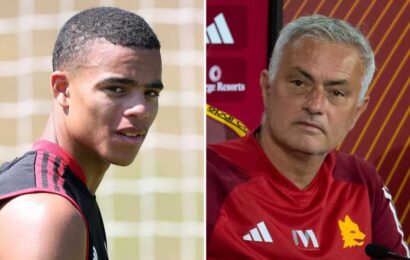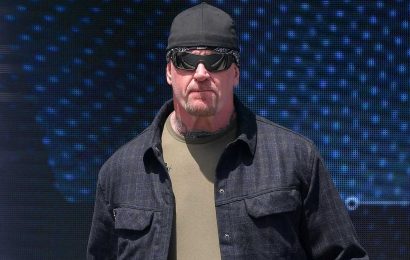- Co-author, Pro Basketball Prospectus series
- Formerly a consultant with the Indiana Pacers
- Developed WARP rating and SCHOENE system
SEATTLE — When Seattle Storm starters Sue Bird and Ezi Magbegor joined reserve Stephanie Talbot in COVID-19 health and safety protocols early Friday, the team scrambled to sign Kiana Williams as a replacement and get the guard from her home in San Antonio to Seattle before that night’s 7 p.m. tip-off.
The WNBA’s hardship rules allow teams to sign a short-term fill-in any time the roster falls below 10 active players, so replacements have been commonplace as teams typically keep just 11 on their roster instead of the maximum 12.
This season’s issues with 10 WNBA players already entering the health and safety protocols, however, have introduced a new class of hardship replacements stepping in for players who enter the protocols after a positive test for COVID-19. Because health and safety absences are more difficult to predict, that means a quick turnaround to sign a replacement, often based on logistics.
Seattle alone has added three different players — including Kaela Davis twice — as protocols necessitated hardship replacements. On May 14, the Storm signed Raina Perez when Epiphanny Prince and Breanna Stewart entered protocols hours before the team played the Mercury in Perez’s hometown of Phoenix.
After Friday’s 79-71 overtime win over the New York Liberty, Stewart and teammate Jewell Loyd lamented the difficulty of replacing players in health and safety protocols.
“As a team, we’ve really been trying to navigate the health and safety protocols and trying to be safe and do the right thing,” Stewart told reporters. “Especially to find out all of this on game day and then still be told, ‘We’re going to continue to play the game, just find a hardship player.’ And Seattle is the farthest city in the country for someone to get to.”
Added Loyd: “If we had a G League, it would help. If we had some practice players in our system, and you could pull from that. (Where) they’re actually here in market, they’re not traveling and then have to play a game. I mean, it’s ridiculous.”
While Seattle has been the team hardest hit by health and safety protocols thus far this season, with COVID-19 rates plateauing at a much higher level than last summer, it’s clear the Storm won’t be the last. And that means more players like Williams will be asked to find their way from home to a WNBA court the same day.
So what does life look like for WNBA hardship players as the league deals with COVID-19 in a new way this season? Nobody had a journey to join a team quite like Williams, who walked ESPN.com through a busy 15 hours between when she got the call from her agent and when she finally checked into her hotel after Friday’s game.
From home in San Antonio to playing in Seattle
10:20 a.m. CT: Williams first hears from her agent about the opportunity with the Storm.
“He told me to pack a bag and that I was going to be playing a game tonight in Seattle,” Williams said. “I got off the phone with him and started packing.”
Uncertain how long she’ll be with the Storm — which depends on how quickly players test out of protocols — Williams throws as many clothes as possible in the single suitcase she brought along with a backpack. Despite the rush, Williams didn’t forget anything.
“I got my toothbrush, body wash, I got all the essentials,” she said. “At the end of the day, if I need some clothes, it’s nothing for me to go shopping. I love shopping.”
11 a.m. CT: Williams heads to the airport — in Austin.
“Unfortunately, San Antonio is a smaller airport, so there weren’t any flights that were going to get me to the game on time,” she said. “So I had to drive an hour to Austin and got on a direct flight.”
Because she spends the winter playing internationally — she spent last season with the Adelaide Lightning of the Australian WNBL — and hopes to spend her summer in the WNBA (she was with the Phoenix Mercury before being waived during training camp), Williams is living with her parents. Her mom was off work Friday and was able to drive Williams to the airport.
“She took my car back so hopefully she’s taking care of my baby,” Williams said, referring to the car.
12 p.m. CT: Williams deals with what she described as the most difficult part of her journey: getting through TSA security at Austin-Bergstrom International Airport.
“Austin’s airport is terrible in the sense that there’s no TSA PreCheck (line),” she said. “I have all that and they don’t have those lines available, so I was in line for maybe 30 minutes. Not even joking.”
1 p.m. CT: Williams grabs a sandwich — her only meal during the trip — before boarding the four-hour Alaska Airlines flight. She also had some snacks at the arena, she said, “But I was really going off adrenaline Friday night.”
4:30 p.m. PT: Williams’ flight arrives at the Seattle-Tacoma International Airport gates about two and a half hours before tip-off.
5 p.m. PT: Williams gets her bag from baggage claim. Storm general manager Talisa Rhea is there to pick her up for the 16-mile drive to Climate Pledge Arena in rush-hour traffic, perhaps a bit muted by people leaving early ahead of the three-day weekend.
5:30 p.m. PT: Williams arrives at the arena, showers and heads to the court for warmups.
7 p.m. PT: Williams plays four minutes off the bench as one of eight active Seattle players in the team’s 79-71 overtime win over New York, handing out a pair of assists.
Given Williams was unable to go through practice or a shootaround before playing in a game, it helped that she spent part of last season with the Storm, who drafted her out of Stanford in the second round. Williams saw action in 10 games as a rookie. Aside from coach Noelle Quinn changing some of the terminology, she found the system easy to pick back up.
11:30 p.m. PT: After going to dinner with some other players, Williams checks into her hotel room in Seattle.
“That was a pretty long day for me,” she said — a massive understatement.
When the NBA dealt with COVID-19 outbreaks during the height of the winter Omicron wave, the league modified its hardship rules to enable rosters that are already far bigger — NBA teams can have up to 17 players, including two on two-way contracts, to the WNBA’s maximum of 12 — to expand quickly.
Notably, the NBA exempted hardship contracts from counting against team salary, meaning teams didn’t have to choose between managing luxury-tax payments and adding needed players. Although the financial factor isn’t as important with the WNBA’s hard salary cap, there is an impact. Salary paid to players on hardship contracts could ultimately take the Storm over the cap and prevent the team from adding a 12th player late in the season.
Williams played 14 minutes and had five points, three assists and two rebounds as part of the Storm’s nine-player rotation in Sunday’s 92-61 victory over New York. And she enjoyed the experience.
“Honestly, it wasn’t anything difficult,” Williams said of Friday’s journey. “I love Seattle. They drafted me. This will always be home.”
Source: Read Full Article








